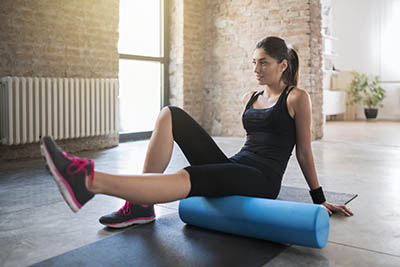 Training hard to compete, trying something new, working out every day to meet your goals—when you’re a go-getter at the gym, you probably deal with post-exercise soreness or pain.
Training hard to compete, trying something new, working out every day to meet your goals—when you’re a go-getter at the gym, you probably deal with post-exercise soreness or pain.
But if you’re coping with chronic pain and inflammation by using over-the-counter pain relievers, it’s time to learn about alternatives to ibuprofen to avoid some potential side-effects.
The Background
While treating an occasional headache or recovering from a minor injury may call for short-term use of nonsteroidal anti-inflammatory drugs (NSAIDs) like ibuprofen, naproxen and aspirin, there’s a danger in relying on NSAIDs to offset chronic pain and inflammation of long-term athletic training.
Each year, tens of thousands of people in the U.S. seek treatment for gastrointestinal bleeding caused by taking NSAIDs. Excessive use of these drugs is often the culprit, and may also contribute to other health problems such as kidney and heart damage, leaky gut syndrome and joint deterioration. Be sure to avoid using them in higher doses than recommended to manage the pain associated grueling workouts…and seek potential alternatives to ibuprofen, too.
Ibuprofen Alternatives
While you can’t necessarily avoid all soreness from working out hard, you can do much to lessen the negative effects, protect your body from further pain and live well. Try the following to feel better without needing NSAIDs.
Rest: Sore muscles lasting a day or two after a workout is usually normal. But if you’re feeling it three or four days later, you might be overtraining. Schedule a break and rest, because your muscles aren’t recovering.
Active Recovery: On the other hand, there is evidence that light movement between workouts is an excellent way to offset inflammation and pain after tough workouts by improving blood flow. Try a light walk, swim or bike ride around the neighborhood on your off days.
Compression: Speaking of blood flow, compression is a handy trick for amping up circulation and moving inflammatory biochemicals out of muscles. Try wearing compression garments during and/or after a tough workout to learn if it helps reduce your post-workout soreness.
Massage: Massage is wonderful for breaking up adhesions and relieving tight spots that are likely to flair. You can perform your own myofascial release with a foam roller after a strenuous workout, why not schedule a massage once a month or enjoy a weekly hydromassage?
Nutrition: After you work out, you need to eat – carbs for energy refueling, protein for tissue repair and fat to help keep your hormones flowing and joints fluid. All this adds up to optimizing your recovery and minimizing side effects like fatigue and inflammation.
Hydration: Dehydration can delay the recovery process and cause pain from cramping. Drink extra water per your workouts—many recommend 24 ounces for each hour of training.
Ointments: Old school remedies like rubbing on a cream or cooling compound after your workout might still do the job as alternatives to ibuprofen. We recommend Biofreeze!


